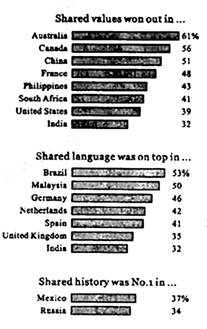题目内容
Do American children still learn handwriting in school? In the age of the keyboard, some people seem to think handwriting lessons are on the way out. 90% of teachers say they are required to teach handwriting.But studies have yet to answer the question of how well they are teaching it. One study published this year found that about three out of every four teachers say they are not prepared to teach handwriting. Some teachers are teaching handwriting by providing instruction for 10 ?15 minutes a day, and then other teachers who basically teach it for 60 to 70 minutes a day — which really for handwriting is pretty much.
Many adults remember learning that way — by copying letters over and over again. Today’ s thinking is that short periods of practice are better. Many experts also think handwriting should not be taught by itself.Instead, they say it should be used as a way to get students to express ideas. After all, that is why we write.
Handwriting involves two skills. One is legibility,_which means forming the letters so they can be read. The other is fluency — writing without having to think about it. Fluency continues to develop up until high school.
But not everyone masters these skills. Teachers commonly report that about one?fourth of their kids have poor handwriting. Some people might think handwriting is not important any more because of computers and voice recognition programs.
But Steve Graham at Vanderbilt says word processing is rarely done in elementary school, especially in the early years. American children traditionally first learn to print, and then to write in cursive, which connects the letters. But guess what we learned from a spokeswoman for the College Board, which administers the SAT college admission test. More than 75 percent of students choose to print their essay on the test rather than write in cursive.
【小题1】We can learn ________ from Paragraph 1.
| A.teaching handwriting is a basic requirement in teaching job |
| B.most teachers prefer to teach handwriting |
| C.teachers spend little time in teaching handwriting |
| D.a keyboard has taken the place of the handwriting entirely |
| A.The students are taught by practicing a long period. |
| B.The letters are repeated many times. |
| C.Handwriting includes two skills. |
| D.To write in cursive is taught first. |
| A.easy to read | B.complex | C.unexpected | D.unreadable |
| A.How to improve handwriting in school |
| B.Right or wrong: the death of handwriting |
| C.Handwriting involves two skills |
| D.Handwriting lessons are on the way out |
| A.negative | B.objective | C.critical | D.optimistic |
【小题1】A
【小题1】D
【小题1】A
【小题1】B
【小题1】B
解析【小题1】根据短文第一段描述,可知书写时教师职业的基础要求,故选A
【小题1】根据短文最后一段American children traditionally first learn to print, and then to write in cursive,描述,可知选项D描述错误。
【小题1】根据下文which means forming the letters so they can be read. 描述,可知这个单词的意思是容易阅读,故选A
【小题1】这篇短文主要讲述的是忽视书写教学究竟是对还是错的问题,故选B,忽视书写,是对还是错。
【小题1】通过阅读短文可见作者本身的观点只是客观反映了学校中存在的一些事实,故选B,客观的,现实的。


What brings a nation together? Of the four choices — shared values, language, history, and religion, it’s shared values. In our latest poll (民意调査), seven out of 16 countries chose values as the greatest factor (因素)bringing a nation together, and six preferred language. Both choices scored high in the poll, suggesting that our values and how we express them are closely linked .Still, history was not forgotten in some countries, particularly in Mexico and Russia. Even Canada and the United States chose national histories as the second-most important factor uniting their people. The biggest surprise? Not one country picked religion as its top choice.
| Respect your elders In most countries, the oldest generation considered values more important to a nation than did those who are under 45 years old. | Do you speak Canadian? Language scored lower in Canada than in all other countries polled, perhaps because the country speaks two official languages, French and English. | Church and state Most people polled do not connect their religious beliefs to their national pride. Religion ranked last in 13 countries — with France scoring it at 1%, the lowest of all. |
| A.Language. | B.Values. | C.History. | D.Religion. |
| A.Canada. | B.Mexico. | C.France. | D.America. |
| A.Australia | B.Brazil | C.China | D.India |

【小题1】What is Kelly Chan going to do?
| A.To hold a concert. | B.To go on a diet. | C.To watch a game. | D.To make a dress. |
| A.Russia | B.Japan | C.South Korea | D.America |
| A.America has too many good athletes |
| B.children shouldn’t have too many soft drink |
| C.schools should organize more picnics |
| D.most parents in America have health problem |
| A.Kelly Chan has been dancing with 40 people |
| B.Maria Sharapova has won the Japan Open 17 times |
| C.soft drinks and fast food are really good for children’s health |
| D.many American children have too much fast food and too little exercise |